Absolutely! Stearic acid is a super versatile ingredient that pops up in everything from cosmetics to candles to pharmaceuticals. Here’s a complete look at its uses and benefits, especially in DIY, cosmetic, and industrial contexts.
What Is Stearic Acid?
Stearic acid is a saturated fatty acid derived from animal fats or plant oils (like palm or coconut oil). It usually comes as a white, waxy solid and is non-toxic and biodegradable.
USES of Stearic Acid
1. Cosmetics & Skincare
-
Used as a thickener and emulsifier in lotions, creams, and balms.
-
Stabilizes emulsions (helps oil and water stay mixed).
-
Adds a smooth, rich texture to skincare products.
-
Acts as a cleansing agent in soaps and face washes.
2. Soaps & Shaving Creams
-
Gives soap hardness and a creamy lather.
-
Enhances the opacity and consistency of shaving foams.
3. Candles
-
Added to paraffin wax to improve hardness and slow burn rate.
-
Helps candles hold their shape and resist melting in warm environments.
4. Plastics & Rubber
-
Used as a lubricant and release agent in plastic molding and rubber production.
-
Prevents materials from sticking to molds.
5. Pharmaceuticals
-
Works as a binder and lubricant in tablet-making.
-
Helps control how a drug is released in the body.
6. Dietary Supplements
-
Included as a flow agent in capsules and tablets (makes processing easier).
✅ BENEFITS of Stearic Acid
1. Natural Origin & Skin-Friendly
-
Derived from natural fats; safe for most skin types, including sensitive skin.
-
Acts as an emollient, helping to soften and protect the skin.
2. Improves Texture
-
Adds a smooth, luxurious feel to creams and body butters.
-
Prevents formulations from separating.
3. Boosts Product Stability
-
Helps emulsions stay stable over time — essential for lotions and creams with both oil and water phases.
4. Enhances Soap Quality
-
Makes soaps firm, long-lasting, and creamy.
-
Great for bar soaps that don’t melt away quickly in the shower.
5. Environmentally Friendly
-
Biodegradable and typically considered non-toxic in cosmetic concentrations.
⚠️ Things to Note
-
Always check the source if you’re vegan — some stearic acid is animal-derived, but plant-based options are widely available.
-
It’s generally non-comedogenic, but in very high concentrations, it could feel heavy on oily skin types
DIY IDEA: Rich Body Butter with Stearic Acid
Want a thicker, more luxurious feel to your body butter? Add 2–5% stearic acid during the oil phase and blend well — it’ll give your mix structure and a soft, velvety glide.
Nice! You’re diving into DIY cosmetics? ✨ Love it. Let’s focus on how to use stearic acid in DIY skincare and body care products — plus give you a starter recipe or two. Stearic acid is a must-have if you’re into making creams, lotions, or soaps that are thick, creamy, and feel luxurious.
Why Use Stearic Acid in DIY Products?
Stearic acid is:
-
A natural thickener and hardener.
-
An emulsifier helper – it helps oil and water blend and stay blended.
-
A texture enhancer – gives that rich, creamy feel to lotions and butters.
-
An emollient – softens and smooths the skin.
How to Use Stearic Acid in DIY Formulas
-
Usage rate: Usually 1%–5% depending on the product.
-
Add it to the oil phase and heat it gently to melt (melts around 69–70°C).
-
Pairs well with: shea butter, cocoa butter, emulsifying wax, glyceryl monostearate (GMS), oils, etc.
DIY RECIPES with STEARIC ACID
✅ 1. Rich DIY Body Lotion (Non-Greasy)
Ingredients:
-
70% Distilled Water (or floral water)
-
10% Sweet Almond Oil (or any carrier oil)
-
5% Shea Butter
-
3% Stearic Acid
-
5% Emulsifying Wax (or GMS SE)
-
5% Glycerin (humectant)
-
1% Preservative (like Optiphen or Geogard)
-
1% Essential Oils (optional)
Instructions:
-
Heat oil phase (oil, butter, stearic acid, emulsifying wax) in a double boiler.
-
Heat water phase (water + glycerin) separately.
-
Once both reach ~70°C, combine water into oil while blending with a stick blender.
-
Stir until emulsified, then cool to below 40°C.
-
Add preservative and essential oils. Mix well.
-
Pour into clean jar or pump bottle.
✅ Result: Light, creamy lotion that absorbs fast but feels rich!
2. Creamy Stearic Acid Soap (Bar Soap Booster)
If you’re into cold process soap making:
-
Add 3–5% stearic acid to your recipe to harden and boost creamy lather.
-
Melt with your oils before adding lye water.
-
Adds longevity and firmness to soft soap recipes.
Note: Not suitable for melt-and-pour soap unless you’re formulating from scratch.
3. Thick DIY Body Butter
Ingredients:
-
30% Shea Butter
-
20% Cocoa Butter
-
30% Coconut Oil or Jojoba
-
3–5% Stearic Acid
-
1% Vitamin E Oil
-
1% Essential Oil (optional)
Instructions:
-
Melt all ingredients except vitamin E and essential oils in a double boiler.
-
Let it cool until just starting to solidify, then whip it with a hand mixer.
-
Add vitamin E and essential oils.
-
Whip until fluffy, then jar it up!
✅ Result: A rich butter that holds its shape and melts into the skin.
Bonus Tip:
Want vegan-friendly stearic acid? Look for plant-derived sources (usually palm or coconut based). Most DIY suppliers label this clearly.
-
-
Stearic Acid Usage Rate Guide
Product Type Typical Usage Range Function Lotions 2% – 5% Thickener, stabilizer, emollient Creams 2% – 6% Rich texture, helps emulsify Body Butters 1% – 5% Firming agent, improves glide Conditioners 1% – 3% Thickener, softens feel Cold Process Soap 3% – 5% (of total oils) Hardener, creamy stable lather Shaving Creams 3% – 6% Dense, cushiony foam & smooth texture Emulsions (with GMS or E-wax) 2% – 4% Co-emulsifier & stabilizer
Formulation Tips:
-
< 2% = Light thickening effect.
-
2% – 4% = Ideal for stable creams and lotions with a smooth texture.
-
> 5% = Very thick or dense products (e.g. balms, shaving creams). May feel heavier on skin.
✅ Always melt stearic acid with the oil phase (it needs ~70°C to fully dissolve).
-
- NOTE: IT’S MOSTLY USED AS A CO-EMULSIFIER BUT CAN BE USE ALONE BUT BEST USED AS A CO-EMULSIFIER. WHEN USED ALONE, YOU CAN INCREASE IT MORE THAN USAGE RANGE ABOVE TO HAVE PERFECT CONSISTENCY. FIRST, PRACTICE WITH THE ABOVE PERCENTAGES BEFORE INCREASING. HAPPY FORMULATING !!!
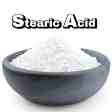
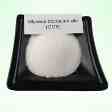
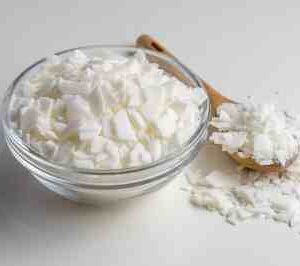
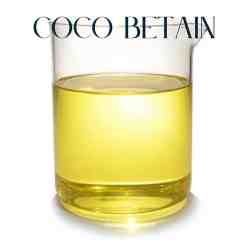
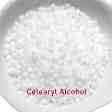
Reviews
There are no reviews yet.